The history of oil painting
As the origin of oil painting is controversial, our story begins in the 15th century, when oil painting was perfected by the Flemish painters. It took the Van Eyck brothers several years of experimentation to develop a new texture, more similar to our contemporary painting.
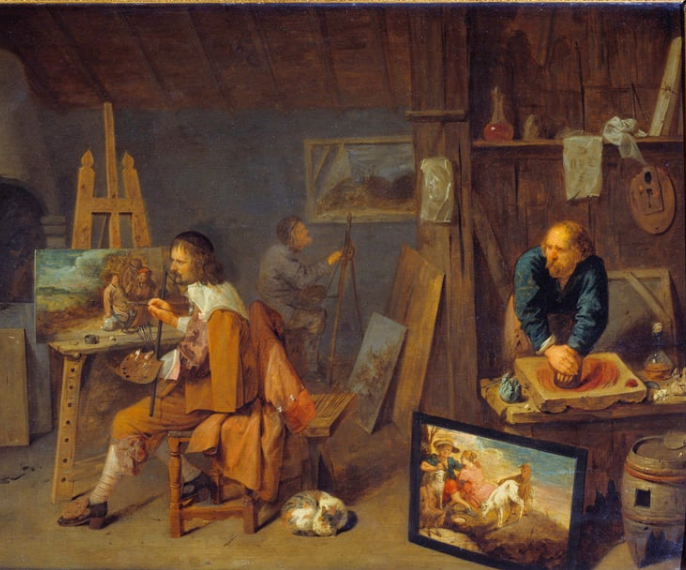
Three centuries later, Lefranc Bourgeois oil painting was born from the meeting between one of the greatest painters of Europe in the 18th century, Jean Siméon Chardin, and his neighbour Charles Laclef, the ancestor of Lefranc Bourgeois. The latter was a grocer.
This corporation was the sole owner of the right to sell raw pigments, while only painters could grind and work them. The alchemy between the two men gave birth to the production of colours as we know them today.
The reputation of the Laclef company meant that in 1753, Jean Baptiste Laclef was appointed supplier of paintings to the Château de Versailles. Only 35 years after its creation, its paintings have reached a worldwide fame due to their purity and their incredible stability.
Oil painting was the queen of painting techniques in the West and reigned supreme from antiquity until the time of Impressionism in the 19th century. At that time, the material was composed of ground pigments and a binder - linseed oil - and dried through a process of siccativation (oxidation of the oil in the paint). Later, the addition of resins to the mixture of pigments and oil made it possible to speed up the drying time and make it durable over time. Thus, it gradually replaced the tempera technique at the end of the Middle Ages and its use spread throughout Europe.
The basis of the composition of oil paint is still the same today! Linseed oil is the most common, but safflower, poppy and walnut oil are also used. Nowadays, pigments are no longer ground by hand but by highly sophisticated machines. The fineness of the grinding, the selection of the binders and the pigment load make it possible to obtain either a fine oil, slightly less concentrated in pigments, or an extra-fine oil which has the highest pigment load.
It is this ancestral know-how that makes the unique quality of Lefranc Bourgeois paints.
Discover here the know-how of Lefranc Bourgeois
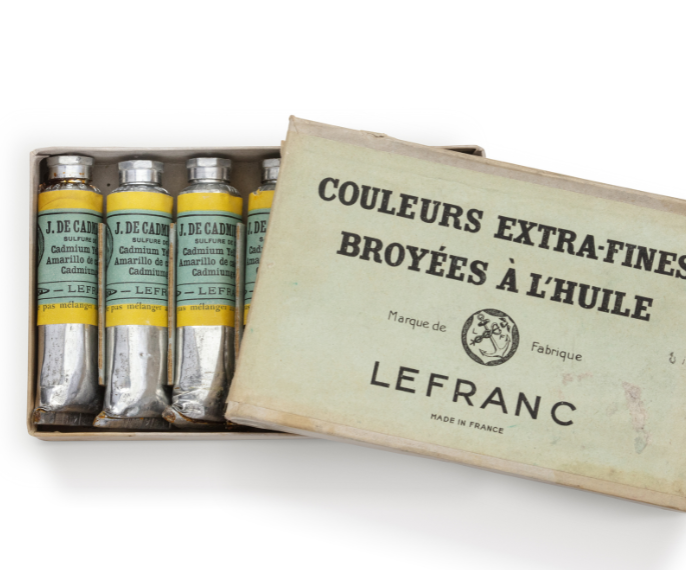
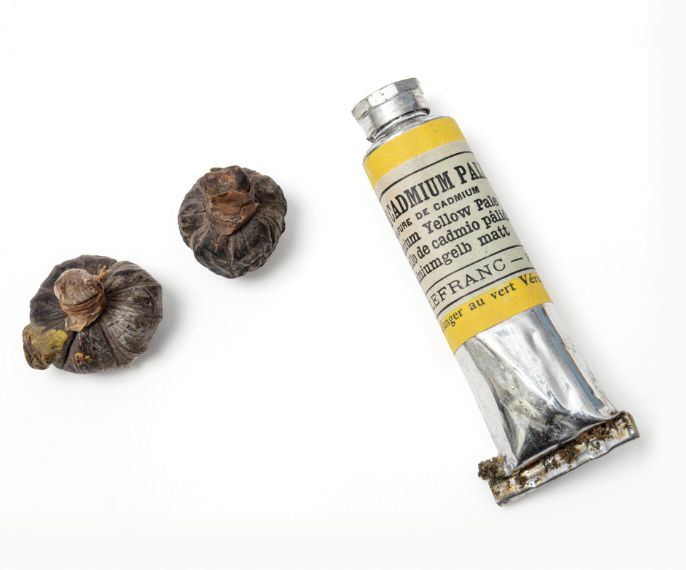
In 1859, the destiny of the Lefranc company took another turn: it was directed by Alexandre Lefranc, a pioneer, visionary and passionate.
He put the finishing touches to years of research on paint packaging. The development of the screw cap on paint tubes allows painters to leave their workshops.
The development of photography and the democratization of plein air painting encouraged painters to move away from the faithful representation of reality by capturing the moment and natural light.
Inspiration came from scenes of everyday life and landscapes, which broke with the classical representations of Greek mythology and biblical scenes. This was the beginning of Impressionism.
A true revolution in the history of art, this innovation gave rise to new techniques, and thus new paintings...
The Electricity Fairy, 1937, Raoul Dufy
Renowned for his genius and passion for the arts, Marc Havel, the laboratory's chief engineer, was approached by the painter Raoul Dufy, who had a project to create the largest painting in the world: The Electricity Fairy (10 metres high and 62 metres long) for the 1937 World Exhibition.
The problem was to be able to complete this monumental work as quickly as possible. Lefranc Bourgeois therefore created a light and quick-drying paint, to be able to work in transparency: the idea was to associate with the oil paint an emulsion type medium (skin glue stretched out in water, in emulsion with the oil colour and 10% Dammar gum), allowing superimpositions in the freshness, preserving a transparency and a mattness, while ensuring that the whole thing dries through.
La Fée Electricité is in the Museum of Modern Art in Paris, where its perfect conservation over time can still be admired today.
Following this fruitful collaboration, Lefranc Bourgeois developed a range of transparent colours in 1950, specially designed for glazes, which became the ancestor of the iconic Flashe!
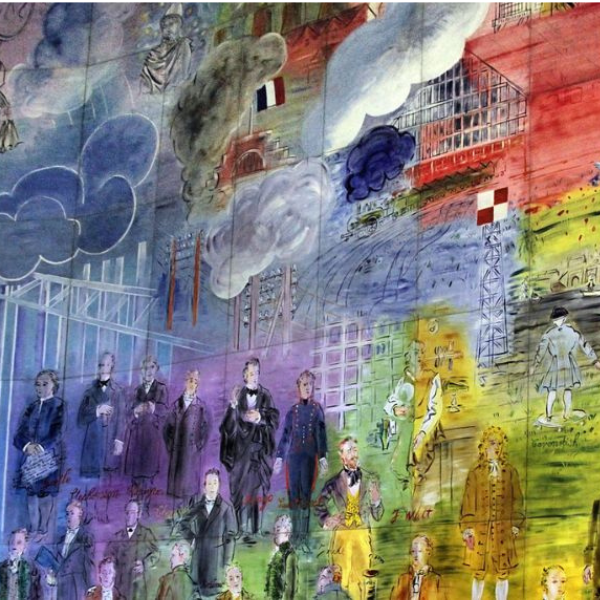
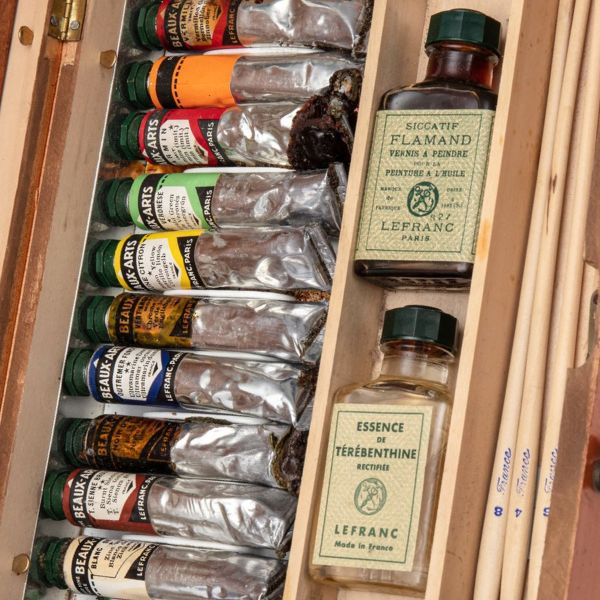
How can you talk about oil painting without talking about mediums?
Oil paint has always been accompanied by a medium, a material with which it is mixed in order to modify its properties and thus gain access to ever greater creativity.
Historically based on egg, the mediums traditionally used are Flemish medium or turpentine.
Oil paint can be worked with a brush or a knife to create effects in the material. It is possible to accentuate these textures by using mediums.
Depending on the degree of creativity sought, the type of medium used will allow for viscosity, dryness, transparency, smoothness, shine.... It can favour the inclusion of fillers or, on the contrary, favour thin layers, glazes.
In 1954, for example, Lefranc Bourgeois invented the definitive formula for Flemish Medium, inspired by Flemish painters who were looking for a very lacquered, dense and textured finish.
Learn more about oil painting mediums
In 1892 the painter Vibert collaborated with the Lefranc company and developed numerous varnishes and mediums. In fact, the benefits of these additives are not new. Already in the 13th century, painters were looking for effects and mixed their paints with balms, resins (amber) to transform them.
Later, Xavier de Langlais, also a painter and collaborator with chemists, developed the egg medium.
Numerous products were the result of this work, some of which are still marketed today.
In 1954, the definitive formula of the Flemish medium was developed to bring depth and luminosity to the paintings, the Venetian medium allowed him to paint with a touch and to bring roundness to the colours.
Discover all the mediums for oil painting, their effects and their uses.
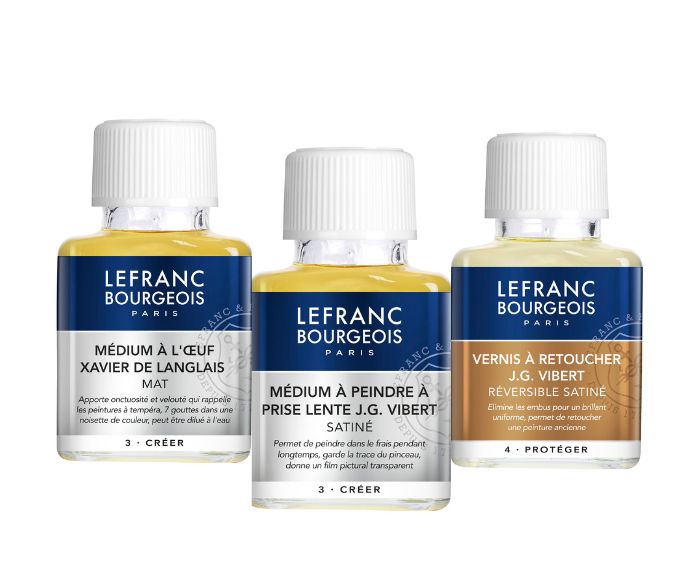
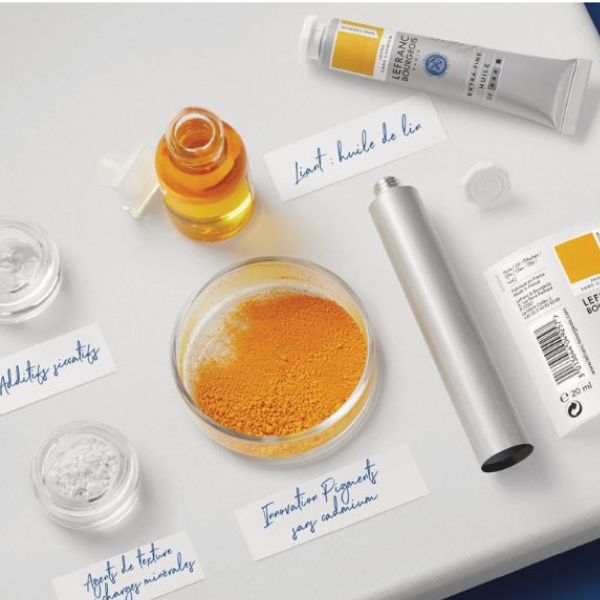
Innovation for DNA
The year 2017 was marked by an important innovation, after more than ten years of research, chemists succeeded in extracting cadmium from extra-fine oil paints.
This heavy metal, responsible for diseases affecting bones and liver, and ecotoxic, has been removed from 8 shades of the fine oil range, without any impact on the quality of the paint.
With respect for tradition and innovation, Lefranc Bourgeois is committed to providing a healthier and more environmentally friendly paint to allow you to reveal your full artistic potential.
Eventually add the minimum weight/complicated qualities to be removed from the paint.
